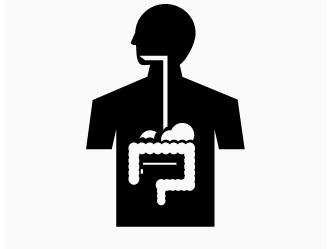The Ins & Outs Of The Human Digestive System
 The way our body digests and processes the food we consume on a daily basis is magnificent. In most cases, after these processes, you’ll feel reenergized and ready to tackle the day. Other instances, where you’ve consumed some lesser healthy foods, may leave you feeling even more drained than before. Whatever the case maybe, these results are due to the chemical and mechanical processes that draw the nutrients out of the food we eat. This can be a long process, sometimes extending past 40 hours from the consumption of any food item to the excretion of that same food item. This is an integral process of every individual’s body around the world that ensures they’re receiving the nutrients needed to remain healthy and fully functioning.
The way our body digests and processes the food we consume on a daily basis is magnificent. In most cases, after these processes, you’ll feel reenergized and ready to tackle the day. Other instances, where you’ve consumed some lesser healthy foods, may leave you feeling even more drained than before. Whatever the case maybe, these results are due to the chemical and mechanical processes that draw the nutrients out of the food we eat. This can be a long process, sometimes extending past 40 hours from the consumption of any food item to the excretion of that same food item. This is an integral process of every individual’s body around the world that ensures they’re receiving the nutrients needed to remain healthy and fully functioning.
The digestive system has a unique process for breaking down different nutrients that our body consumes. Carbohydrates, which provide the most fuel and energy to our bodies, begin their digestion process in our mouths. Our saliva produces an enzyme known as salivary amylase, which breaks down the large carbohydrate molecules into smaller components that simplify the digestion process. These simplified components, now classified as chyme, continue through the digestive track to the small intestine where they’re met with additional enzymes to break down the sugar molecules that are bonded together in the carbs that were consumed. These now separated sugars are absorbed into the small intestine where they’ll serve two major functions. The first is an immediate release of energy to struggling parts of your body. The second is the buildup and storage of this excess energy assuming your body isn’t in dire need of it.
As mentioned previously, different nutrients from different food groups are digested by our bodies differently. While this is the process for carbohydrates, the process for fats is slightly different. Similarly to carbs, fats begin their digestion in our mouths through another saliva produced enzyme known as lipase. This lipase allows the fat to be broken down to a form that is susceptible to bile from our livers. Bile, the liquid responsible for further breaking down our digested fats, splits the digested fat into sizes more suitable for additional lipase enzymes to breakdown these molecules at the rate our body needs the energy.
Understanding how your body digests the food you eat isn’t enough to maintain a healthy digestive system. If you’re concerned about your digestive health, the best way to ensure a healthy digestive system is through a diet high in both soluble and insoluble fibers. You should make it a habit to consumes foods that re naturally high in fiber. Whole grains, beans, oats, peas, and a number of fruits are common staples. A diet high in fiber can help manage your blood sugar, decrease constipation, and even control body weight. If you’re looking to take your diet a step further, consider incorporating probiotics slowly. Whether it be from a supplement or fermented foods like yogurt, probiotics can do a lot for a person’s digestive system.
If you’re still struggling to understand your digestive system or are looking for ways to increase your digestive health, check out the featured infographic below. Courtesy of Quadro Liquids.
